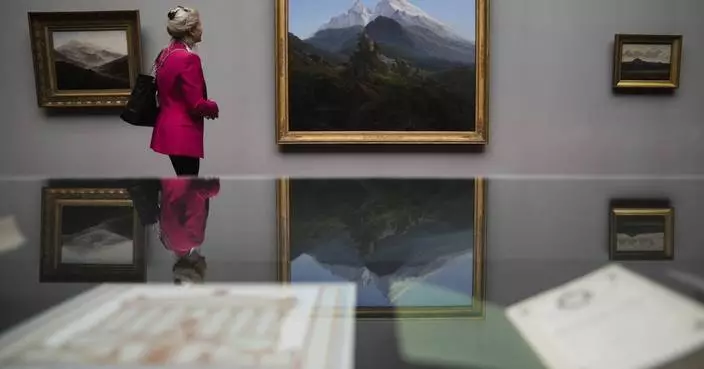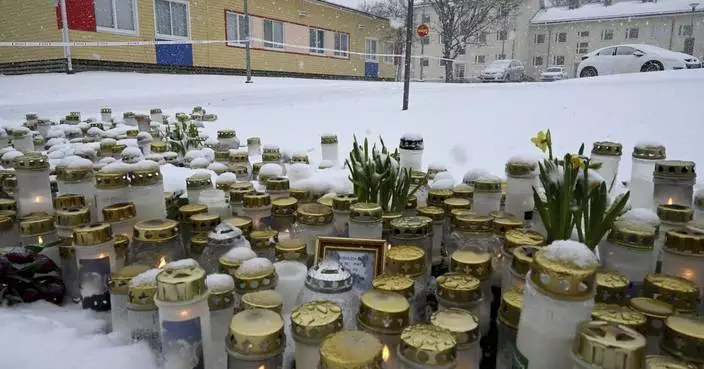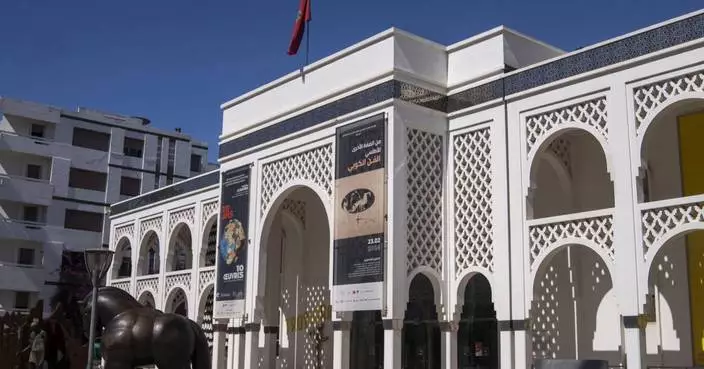Some 250 art works that a reclusive collector hid from the world for decades, including pieces likely looted from Jewish owners under Nazi rule, are going on show at a German museum.
The paintings being shown starting Thursday at Bonn's Bundeskunsthalle — including works by Albrecht Duerer, Claude Monet and Camille Pissarro — are from the huge art collection hoarded by late collector Cornelius Gurlitt. Authorities first stumbled on the art, stored in Gurlitt's Munich home, while investigating a tax case in 2012.
Click to Gallery
Some 250 art works that a reclusive collector hid from the world for decades, including pieces likely looted from Jewish owners under Nazi rule, are going on show at a German museum.
The exhibition focuses on works of art believed to have been taken from their mostly Jewish owners as part of Nazi persecution and on works whose provenance hasn't yet been established.
The Bonn show, subtitled "Nazi Art Theft and Its Consequences," aims to put the works into their historical context. It tries to shed light on Hildebrand Gurlitt's life and also focuses on the fate of Jewish artists, collectors and art dealers who fell victim to the Nazi regime.
That has been a slow and painstaking task. So far, experts have identified six works as definitely having been looted by the Nazis — the latest of them last month, when researchers determined that the "Portrait of a Seated Young Woman" by Thomas Couture belonged to Georges Mandel.
A visitor takes a picture of a paining by Max Liebermann at tthe exhibition 'Gurlitt : Status Report' in Bonn, Germany, Thursday, Nov. 2, 2017. Bundeskunsthalle museum is presenting some 250 art works from the 1,500-piece collection hoarded for decades by the late collector Cornelius Gurlitt, including pieces likely looted from Jewish owners under Nazi rule. (AP Photo/Martin Meissner)
Curators talk to the media at a press conference at the Bundeskunsthalle in Bonn, Germany, Thursday, Nov. 2, 2017 prior to the exhibition 'Gurlitt: Status Report'. Bundeskunsthalle museum is presenting some 250 art works from the 1,500-piece collection hoarded for decades by the late collector Cornelius Gurlitt, including pieces likely looted from Jewish owners under Nazi rule. (AP Photo/Martin Meissner)
The painting "The Persian" by Oskar Kokoschka is on display at the exhibition 'Gurlitt : Status Report' in Bonn, Germany, Thursday, Nov. 2, 2017. Bundeskunsthalle museum is presenting some 250 art works from the 1,500-piece collection hoarded for decades by the late collector Cornelius Gurlitt, including pieces likely looted from Jewish owners under Nazi rule. (Oliver Berg/dpa via AP)
Museum employees walking through the exhibition 'Gurlitt : Status Report' in Bonn, Germany, Thursday, Nov. 2, 2017. Bundeskunsthalle museum is presenting some 250 art works from the 1,500-piece collection hoarded for decades by the late collector Cornelius Gurlitt, including pieces likely looted from Jewish owners under Nazi rule. (Oliver Berg/dpa via AP)
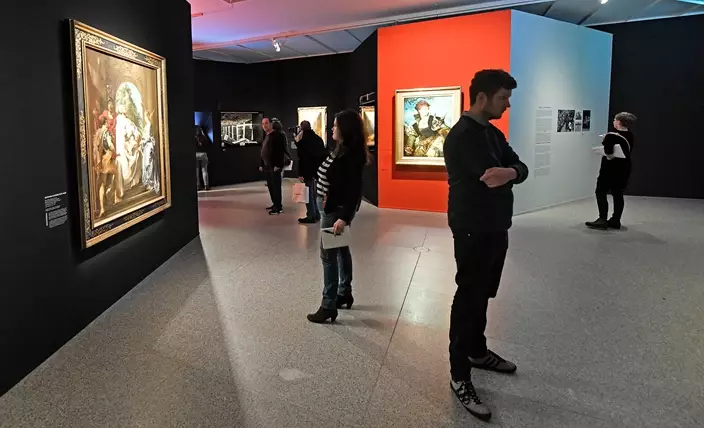
People visit the exhibition 'Gurlitt : Status Report' in Bonn, Germany, Thursday, Nov. 2, 2017. Bundeskunsthalle museum is presenting some 250 art works from the 1,500-piece collection hoarded for decades by the late collector Cornelius Gurlitt, including pieces likely looted from Jewish owners under Nazi rule. (AP Photo/Martin Meissner)
The exhibition focuses on works of art believed to have been taken from their mostly Jewish owners as part of Nazi persecution and on works whose provenance hasn't yet been established.
The Bonn show is part of a double exhibition titled "Gurlitt: Status Report." A parallel show in the Swiss capital Bern features some 200 works from the collector's trove, mostly from artists who were defamed by the Nazis as "degenerate."
The art on display in Bern includes Expressionist works by artists such as Otto Dix and Franz Marc.
It is the first chance for the public to view any of the paintings and other works from the 1,500-piece collection that belonged to the estate of Gurlitt's father, the Nazi-era art dealer Hildebrand Gurlitt.

A visitor passes a Renaissance painting of Peter Paul Rubens at the exhibition 'Gurlitt : Status Report' in Bonn, Germany, Thursday, Nov. 2, 2017. Bundeskunsthalle museum is presenting some 250 art works from the 1,500-piece collection hoarded for decades by the late collector Cornelius Gurlitt, including pieces likely looted from Jewish owners under Nazi rule. (AP Photo/Martin Meissner)
The Bonn show, subtitled "Nazi Art Theft and Its Consequences," aims to put the works into their historical context. It tries to shed light on Hildebrand Gurlitt's life and also focuses on the fate of Jewish artists, collectors and art dealers who fell victim to the Nazi regime.
The works cover a broad time span, from Lucas Cranach via Carl Spitzweg and Edgar Degas to Max Beckmann. Among the highlights are Monet's "Waterloo Bridge" and the marble sculpture "Crouching Woman" by Auguste Rodin.
Cornelius Gurlitt, who died in 2014, had squirreled away more than 1,200 works in his Munich apartment and a further 250 or so at a property in Salzburg, Austria.
His will bequeathed the works to the museum in Bern. A German government-backed foundation is working with it to ensure that any pieces looted from Jewish owners are returned to their heirs.
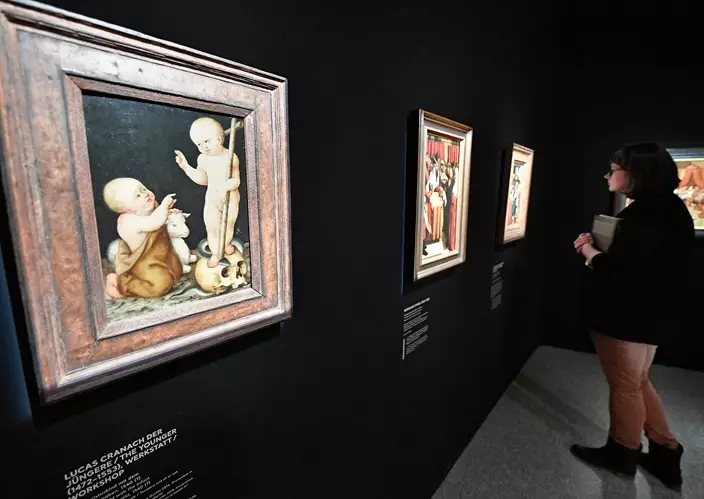
Paintings of Lucas Cranach the younger are shown at the exhibition 'Gurlitt : Status Report' in Bonn, Germany, Thursday, Nov. 2, 2017. Bundeskunsthalle museum is presenting some 250 art works from the 1,500-piece collection hoarded for decades by the late collector Cornelius Gurlitt, including pieces likely looted from Jewish owners under Nazi rule. (AP Photo/Martin Meissner)
That has been a slow and painstaking task. So far, experts have identified six works as definitely having been looted by the Nazis — the latest of them last month, when researchers determined that the "Portrait of a Seated Young Woman" by Thomas Couture belonged to Georges Mandel.
Mandel, a Jewish French politician, was murdered in 1944. That piece is among those on show in Bonn.
The curator of the Bonn exhibit said that a lot of work still remains to be done regarding the provenance of much of the collection.
"The origin of more that 50 percent of the art pieces has not yet been solved, "Agnieszka Lulinska told the German news agency dpa.
The Bonn exhibition runs until March 11. The Bern exhibition runs until March 4.
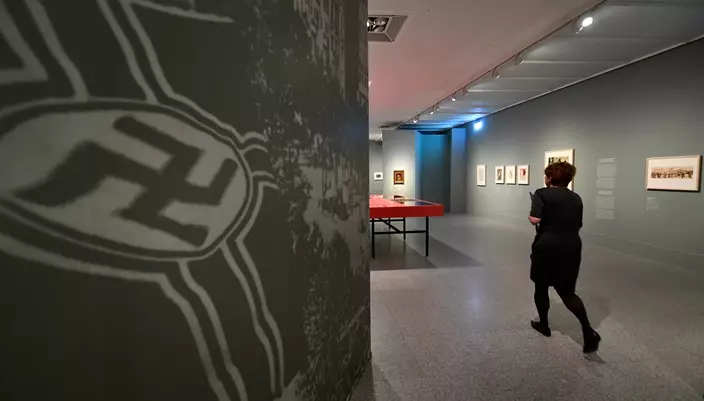
A visitor enters the exhibition 'Gurlitt : Status Report' in Bonn, Germany, Thursday, Nov. 2, 2017. Bundeskunsthalle museum is presenting some 250 art works from the 1,500-piece collection hoarded for decades by the late collector Cornelius Gurlitt, including pieces likely looted from Jewish owners under Nazi rule. (AP Photo/Martin Meissner)
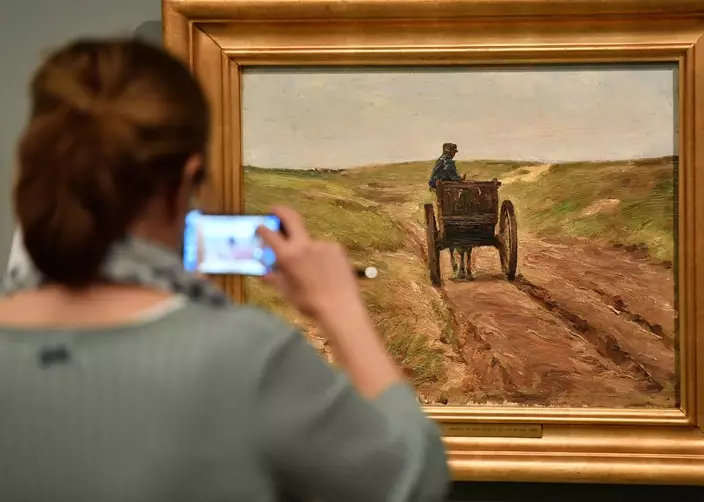
A visitor takes a picture of a paining by Max Liebermann at tthe exhibition 'Gurlitt : Status Report' in Bonn, Germany, Thursday, Nov. 2, 2017. Bundeskunsthalle museum is presenting some 250 art works from the 1,500-piece collection hoarded for decades by the late collector Cornelius Gurlitt, including pieces likely looted from Jewish owners under Nazi rule. (AP Photo/Martin Meissner)
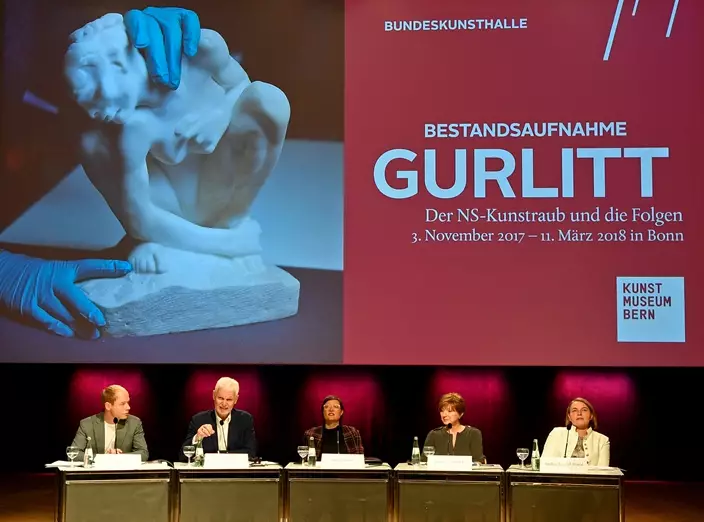
Curators talk to the media at a press conference at the Bundeskunsthalle in Bonn, Germany, Thursday, Nov. 2, 2017 prior to the exhibition 'Gurlitt: Status Report'. Bundeskunsthalle museum is presenting some 250 art works from the 1,500-piece collection hoarded for decades by the late collector Cornelius Gurlitt, including pieces likely looted from Jewish owners under Nazi rule. (AP Photo/Martin Meissner)

The painting "The Persian" by Oskar Kokoschka is on display at the exhibition 'Gurlitt : Status Report' in Bonn, Germany, Thursday, Nov. 2, 2017. Bundeskunsthalle museum is presenting some 250 art works from the 1,500-piece collection hoarded for decades by the late collector Cornelius Gurlitt, including pieces likely looted from Jewish owners under Nazi rule. (Oliver Berg/dpa via AP)

Museum employees walking through the exhibition 'Gurlitt : Status Report' in Bonn, Germany, Thursday, Nov. 2, 2017. Bundeskunsthalle museum is presenting some 250 art works from the 1,500-piece collection hoarded for decades by the late collector Cornelius Gurlitt, including pieces likely looted from Jewish owners under Nazi rule. (Oliver Berg/dpa via AP)
JOHANNESBURG (AP) — A selection of South African artworks produced during the country’s apartheid era which ended up in foreign art collections is on display in Johannesburg to mark 30 years since the country's transition to democracy in 1994.
Most of the artworks were taken out of the country by foreign tourists and diplomats who had viewed them at the Australian Embassy in the capital, Pretoria. The embassy had opened its doors to Black artists from the townships to be recognized and have their artworks on full display to the public.
The artworks, which reflect the daily struggles of the country’s Black majority during the apartheid era and the effects of racial segregation policies, are on display alongside works by some of South Africa’s exciting contemporary artists.
The exhibition creates a blend of perspectives on South Africa through the eyes of artists who lived during and after the country's most difficult period.
It is a culmination of efforts to repatriate African artworks, artifacts and valuable cultural items to Africa by organizations such as the Ifa Lethu Foundation, which is hosting the exhibition.
The organization has repatriated more than 700 pieces, including works by South African artist Gerard Sekoto, who died in Paris in 1993.
Similar efforts have been made across Africa, including in Benin and Nigeria.
Some of the highlights of the exhibit are an undated piece titled “For the Children” by renowned South African artist and sculptor Dumile Feni, who died in New York in 1991 before he could return to South Africa to witness the end of apartheid.
A 1987 piece titled “Mineworkers” by South African artist Mike Khali which addresses the plight of migrant workers in South African gold mines is also part of the exhibition, which is being held at the Apartheid Museum in Johannesburg.
Michael Selekane, a contemporary artist whose work is part of the exhibition, pointed out some of the technical hurdles faced by artists who came before him.
“The use of material was limited for them. That is why most of their work is black and white, and it is prints. Painting was an expensive medium to work on, their conditions were tough,” he said.
Selekane's “Rosy Future” and “Shattered” are part of the exhibition.
“We need to reflect on the fact that we did not just magically emerge as artists, there were people who laid the way forward regardless of whether their context was difficult, complicated, undoable, they were resilient in what they were doing,” said Lawrence Lemaoana, a contemporary artist whose work is also on show.
“In this period, art by black artists was not considered worth including in South African museums, galleries or corporate or private collections,” notes exhibition curator Carol Brown.
“With the exception of a few outliers — including workshops such as Polly Street in Johannesburg and the Evangelical Lutheran Centre at Rorke’s Drift, established by foreign missionaries in the former province of Natal — art education for black artists was minimal."
“For much of their lives, art materials, books and exhibitions were denied to them,” Brown writes in her curator’s statement.
The works have been grouped thematically, she says: Suffering and Conflict, Dreams of the Future, Leisure and Culture, City of Gold, Whose Land Is It? and The Beginning.
“These themes invite contemplation of the socio-political landscape of present-day South Africa, but also allow us to see how the past influences and shapes the present — and how contemporary visions can highlight the modernity in the overlooked and undervalued art produced under the terrible constraints of apartheid,” she said.
The exhibition runs until July 31.
AP Africa news: https://apnews.com/hub/africa
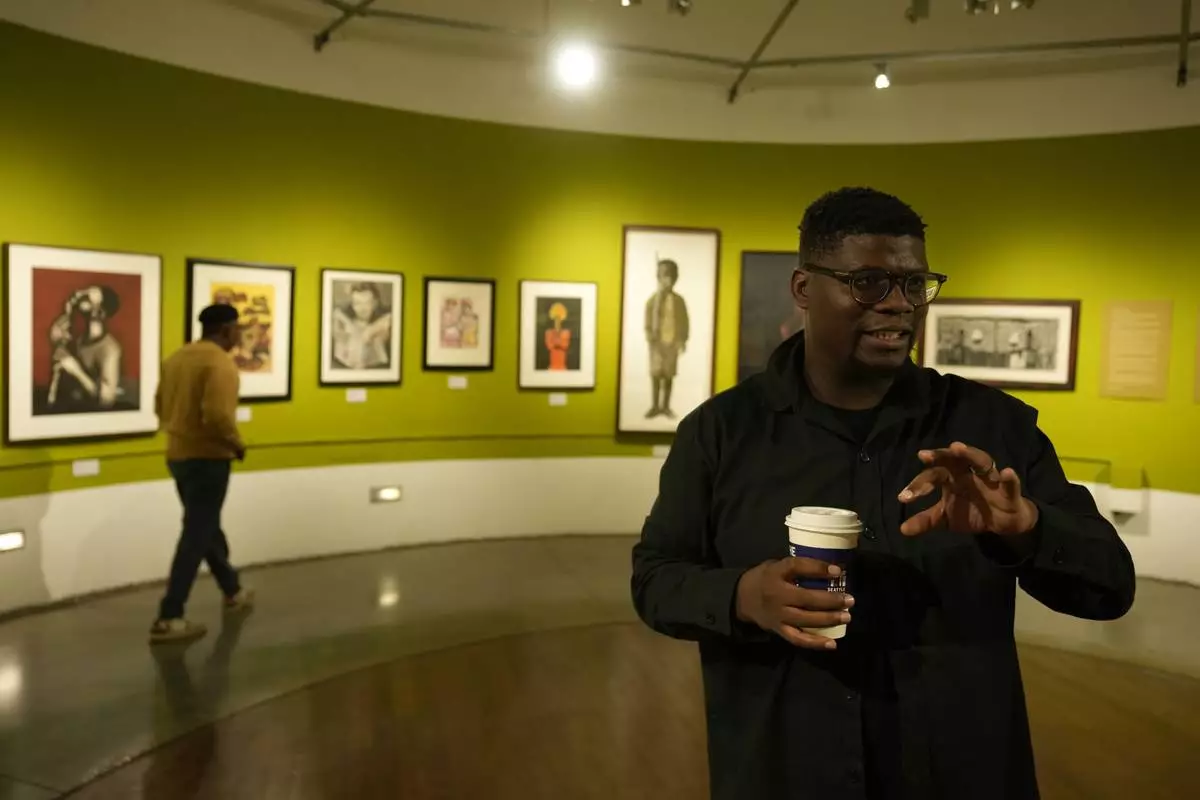
Artist Lawrence Lemaoana at an exhibition at the Apartheid Museum in Johannesburg, South Africa, Wednesday, April 24, 2024. A selection of artworks which were produced during the country's apartheid era and ended up in foreign art collections are on display to mark 30 years since the country's transition to democracy in 1994. (AP Photo/Themba Hadebe)
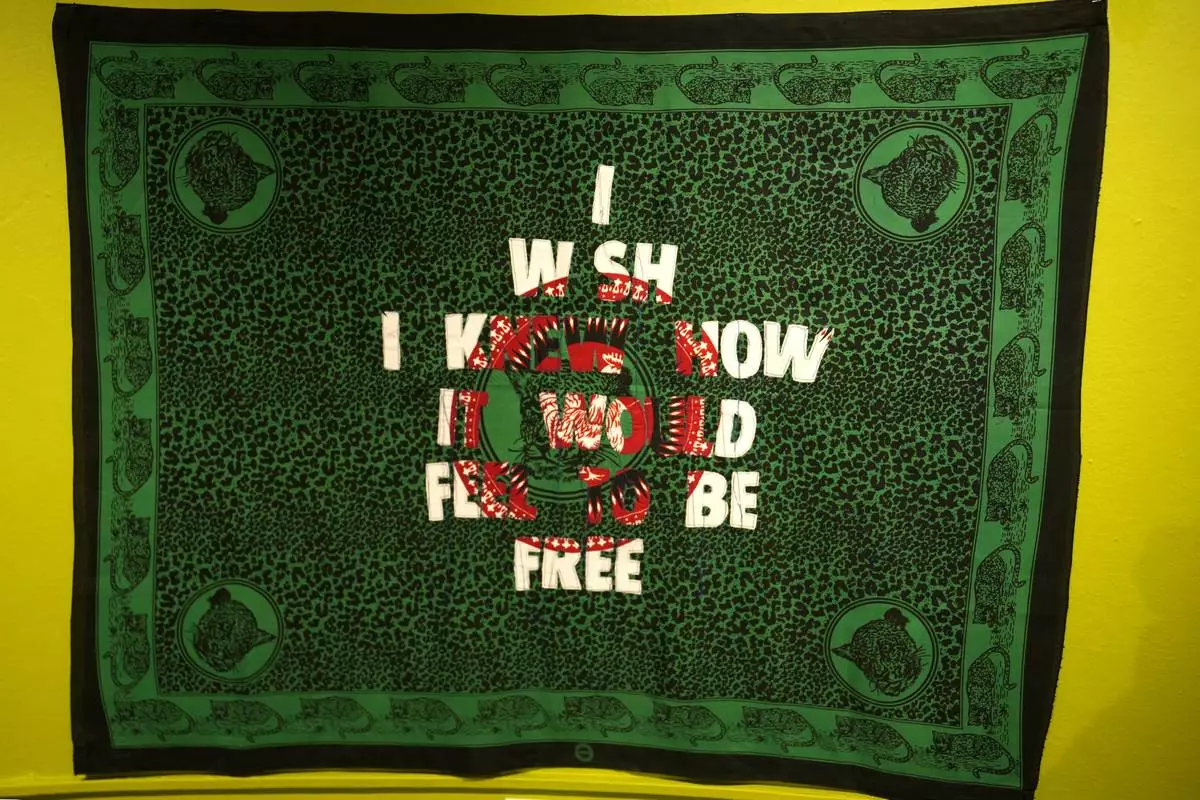
An work by artist Lawrence Lemaoana at an exhibition at the Apartheid Museum in Johannesburg, South Africa, Wednesday, April 24, 2024. A selection of artworks which were produced during the country's apartheid era and ended up in foreign art collections are on display to mark 30 years since the country's transition to democracy in 1994. (AP Photo/Themba Hadebe)
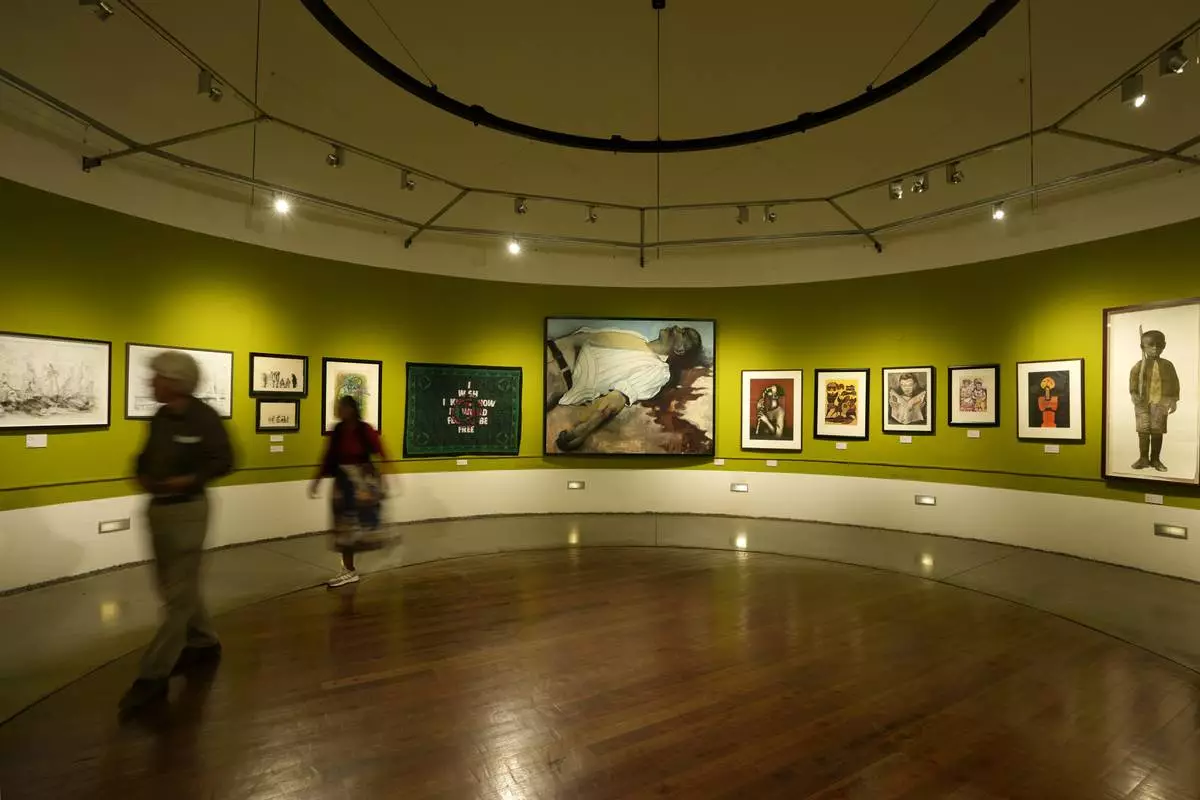
Visitors view an art exhibition at the Apartheid Museum in Johannesburg, South Africa, Wednesday, April 24, 2024. A selection of artworks which were produced during the country's apartheid era and ended up in foreign art collections are on display to mark 30 years since the country's transition to democracy in 1994. (AP Photo/Themba Hadebe)

Artist Michael Selekane takes a photograph of his work at an exhibition at the Apartheid Museum in Johannesburg, South Africa, Wednesday, April 24, 2024. A selection of artworks which were produced during the country's apartheid era and ended up in foreign art collections are on display to mark 30 years since the country's transition to democracy in 1994. (AP Photo/Themba Hadebe)

Artist Lawrence Lemaoana at an exhibition at the Apartheid Museum in Johannesburg, South Africa, Wednesday, April 24, 2024. A selection of artworks which were produced during the country's apartheid era and ended up in foreign art collections are on display to mark 30 years since the country's transition to democracy in 1994. (AP Photo/Themba Hadebe)
















